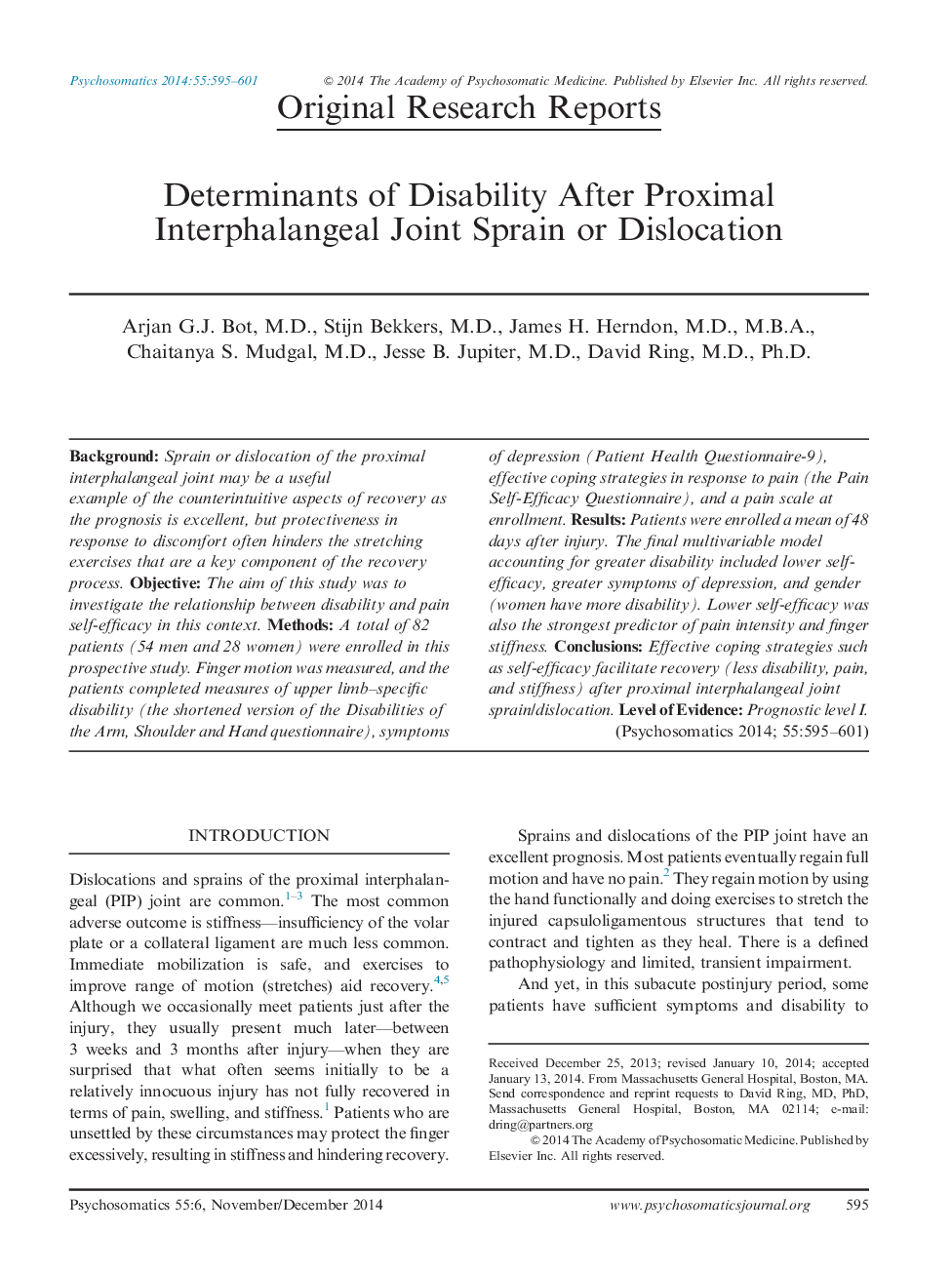| Article ID | Journal | Published Year | Pages | File Type |
|---|---|---|---|---|
| 337473 | Psychosomatics | 2014 | 7 Pages |
BackgroundSprain or dislocation of the proximal interphalangeal joint may be a useful example of the counterintuitive aspects of recovery as the prognosis is excellent, but protectiveness in response to discomfort often hinders the stretching exercises that are a key component of the recovery process.ObjectiveThe aim of this study was to investigate the relationship between disability and pain self-efficacy in this context.MethodsA total of 82 patients (54 men and 28 women) were enrolled in this prospective study. Finger motion was measured, and the patients completed measures of upper limb–specific disability (the shortened version of the Disabilities of the Arm, Shoulder and Hand questionnaire), symptoms of depression (Patient Health Questionnaire-9), effective coping strategies in response to pain (the Pain Self-Efficacy Questionnaire), and a pain scale at enrollment.ResultsPatients were enrolled a mean of 48 days after injury. The final multivariable model accounting for greater disability included lower self-efficacy, greater symptoms of depression, and gender (women have more disability). Lower self-efficacy was also the strongest predictor of pain intensity and finger stiffness.ConclusionsEffective coping strategies such as self-efficacy facilitate recovery (less disability, pain, and stiffness) after proximal interphalangeal joint sprain/dislocation.Level of EvidencePrognostic level I.
